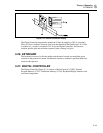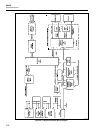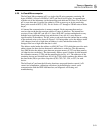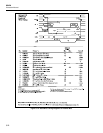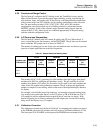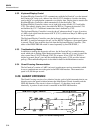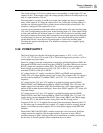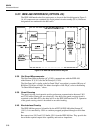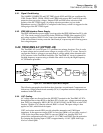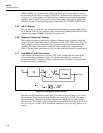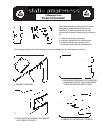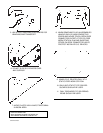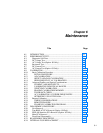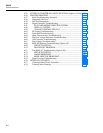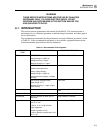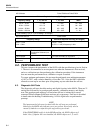
Theory of Operation
TRUE RMS AC (OPTION -09)
5
5-27
5-41. Signal Conditioning
The SAMPLE COMPLETE and EXT TRIG signals (J903 and J904) are conditioned by
U909. Diodes CR903, CR904, CR905, and CR906 and resistors R917 and R918 provide
protection from excessive voltages. Jumpers E902 and E903 allow selection of the
polarity of the EXT TRIG signal. (A polarity selection procedure is given in the
Maintenance section.) The 8842A is configured in the factory so that it is triggered on the
falling edge of the EXT TRIG signal.
5-42. IEEE-488 Interface Power Supply
The IEEE-488 Interface power supply circuit provides the IEEE-488 Interface PCA with
+5V. The circuit consists of rectifying diodes CR908 and CR909, filter capacitor C910,
and voltage regulator VR901. Power comes from transformer T605 on the Main PCA.
U908 and associated circuitry resets the Out-Guard µC at power-up and following power-
line voltage dropouts.
5-43. TRUE RMS AC (OPTION -09)
The True RMS AC circuit (Figure 5-17) performs two primary functions. First, it scales
ac input voltages and ac current sense voltages to a range of 0V to 2V ac rms. Second, it
converts the scaled ac voltages to an equivalent dc voltage which is then directed to the
A/D Converter via the Track/Hold Amplifier. The True RMS AC circuit is trimmed for
flat high-frequency response using a variable filter which is set by the High-Frequency
AC Calibration procedure.
f5-17.wmf
Figure 5-17. True RMS AC Option Block Diagram
The following paragraphs describe how these functions are performed. Components are
laid out on a single printed circuit assembly (PCA). Component reference designators are
numbered in the 800 series.
5-44. VAC Scaling
AC voltage inputs are directed from the HI INPUT terminal to the True RMS AC PCA
through protection resistor R309 on the Main PCA. In this way, voltage transients greater
than 1560V are clamped by MOVs (RV301, RV402, RV403, and RV404) as in the VDC
function. With the VAC function selected, K801 is closed. The input voltage is thus
applied to C801, which blocks dc inputs.
U807 and resistor network Z801 provide selectable attenuation and 1 MΩ input
impedance. In the upper two ranges, K802 is closed and Q806 is off, providing a gain of -
1/500. In the lower three ranges, K802 is open and Q806 is on, shorting Z801-4 to
ground; this configuration provides a gain of -1/5. CR801 and CR802 provide protection
by clamping the inverting input of U807 to approximately +/-0.6V. Q805 shifts logic
levels to control Q806.



